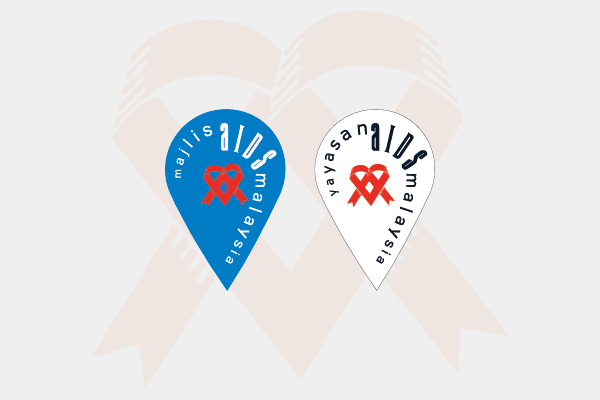Malaysian AIDS Council welcomes Government move to issue compulsory license on lifesaving hepatitis C medicines

The hidden epidemic of hepatitis C
July 27, 2017
LGBT fear mongering fuels AIDS epidemic
October 15, 2017MEDIA RELEASE
For Immediate Release
Malaysian AIDS Council welcomes Government move to issue compulsory license on lifesaving hepatitis C medicines
KUALA LUMPUR, 11 September 2017 – The Malaysian AIDS Council (MAC) commends the Malaysian Government’s action to issue a compulsory license on hepatitis C drugs, allowing for import of the highly effective but exorbitantly priced medicines at the lowest possible costs from generic drug companies.
This decision, which according to reports was taken by the Government on 4 August 2017, will significantly reduce the financial burden of the Government to provide cure to the thousands of Malaysians living with hepatitis C, not to mention the human cost of this otherwise curable disease.
HCV, the highly infectious viral causative agent of hepatitis C, is a major global public health concern responsible for 399,000 deaths worldwide each year. It is estimated that 71 million people have chronic hepatitis C infection globally.[1]
Meanwhile in Malaysia, 3,393 new HCV cases were reported last year, and as many as 500,000 people or 2.5 per cent of the general population are estimated to be living with HCV[2]. Many more are likely to be infected, as the disease remains asymptomatic until it has progressed to advanced cirrhosis, liver failure or cancer.
Due to the overlapping modes of transmission via the drug injecting route, HCV-HIV co-infections are common among people who inject drugs. HCV prevalence among people who inject drugs in Malaysia is estimated to be between 50 to 67 per cent.[3]
HCV can also be transmitted sexually and can be passed vertically from an infected mother to her baby. However, these modes of transmission are far less common.
Until recently, hepatitis C treatment was based on pegylated interferon and ribavirin therapy, which required weekly injections for 24 to 48 weeks. The therapy has poor treatment outcomes and life-threatening side effects.
The advent of oral direct acting antivirals (DAAs) has altered the course of treatment dramatically with cure rates exceeding 90 per cent and shorter treatment duration. In other words, hepatitis C can now be cured with a relatively safe oral regimen.
However, prohibitive prices have restricted access and use of DAAs in Malaysia. Very few patients have benefited from this new class of drugs.
Currently, the cost of the full hepatitis C treatment under this regimen per patient comes to RM300,000. The exorbitant prices are due to patent monopolies held by multinational pharmaceutical companies over the DAAs, in particular sofosbuvir, which is the backbone DAA for any HCV treatment regimen.
Needless to say, the monopoly and unsustainable prices have been at the expense of the lives of hundreds of thousands of patients – in the context of HCV-HCV co-infection, people who inject drugs – and it is downright unacceptable.
Compulsory licensing is indeed a step in the right direction in eliminating barriers to hepatitis C treatment. It is protected under Section 84 of the Malaysian Patents Act and is compliant with the rules of the World Trade Organisation, specifically its Agreement on Trade-Related Aspects of Intellectual Property Rights (TRIPS).
Malaysia in the past has issued compulsory licenses, most notably for antiretrovirals to treat HIV infections, leading to the national roll out of the free first-line HIV treatment policy for Malaysians living with HIV in 2006 which has since helped close to 90 per cent of those on HIV treatment achieve viral suppression[4].
Following the landmark decision on HIV medicines, this will be second time that the Malaysian Government has ever issued a compulsory license, underscoring the importance of an equitable healthcare environment in combating oft-neglected diseases due to socioeconomic and structural barriers.
As a proponent of universal access to health for all, the MAC fully supports the Government’s bold action, aligned with the World Health Assembly’s Global Health Sector Strategy on Viral Hepatitis 2016-2021, which envisions the elimination viral hepatitis as a public health threat by 2030.
Going forward, the MAC together with the Ministry of Health Malaysia will capitalise on the gains that have been made in the AIDS response – especially through the harm reduction programme – as the impetus to drive efforts towards cross-disciplinary partnerships and creating opportunities for integrated HIV-HCV continuum of care.
Through the expansion of community-based HIV testing initiatives under the National Strategic Plan for Ending AIDS 2016 – 2030, measures will be taken to create greater demand for and establish linkages to HCV testing.
The MAC has also recently published At the Edge of a Miracle: The HCV Epidemic in Malaysia, a report that, among other things, makes a case for increased investment in DAAs.
[ENDS]
Malaysian AIDS Council
The Malaysian AIDS Council (MAC) was established in 1992 to serve as an umbrella organisation to support and coordinate the efforts of non-governmental organisations (NGOs) working on HIV and AIDS issues in Malaysia. MAC works in close partnership with government agencies, the private sector and international organisations, to ensure a committed and effective NGO-led response to the HIV epidemic. In addition to providing nationwide coverage of HIV prevention, treatment, care and support services, MAC and its Partner Organisations serve as the common voice for communities most affected by HIV and AIDS in the country. Learn more at www.mac.org.my.
Contact
Malaysian AIDS Council
Zaki Arzmi │ 016.292.2948 │ [email protected]
___________________________________
[1] World Heath Organization: http://www.who.int/mediacentre/factsheets/fs164/en/
[2] Ministry of Health Malaysia
[3] Aceijas C, Rhodes T. Global estimates of prevalence of HCV infection among injecting drug users. International Journal of Drug Policy 2007; 18: 352-358. Hser Y-I, Liang D, Lan Y-C, BK Vicknasingam, Chakrabarti A. Drug abuse, HIV, and HCV in Asian countries. J Neuroimmune Pharmacol 2016. DOI 10.1007/ s11481-016-9665-x
[4] The Joint United Nations Program on HIV/AIDS (UNAIDS) Ending AIDS: Progress towards 90-90-90 Targets: http://www.unaids.org/sites/default/files/media_asset/Global_AIDS_update_2017_en.pdf

